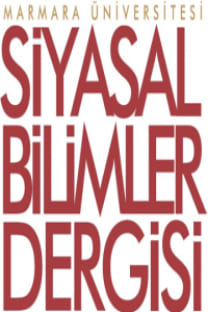Siyasal Kültür: Yeni Yaklaşımlara Genel Bir Bakış
Siyasal kültür bir kuram olarak, Gabriel A. Almond ve Sidney Verba’nın 1963 yılında yayınladıkları “The Civic Culture” çalışması ile ortaya çıkmıştı. Ancak “The Civic Culture”, yayınlandıktan sonra büyük eleştiriler topladı. Bu eleştiriler, bir taraftan siyasal kültür kuramının sorgulanmasına yol açarlarken, diğer taraftan ise, siyasal kültürü yeniden tanımlamaya yönelik çalışmaların itici gücü oldular. Sonuçta, “The Civic Culture” yanında, ortaya birçok yeni yaklaşım çıktı. Bu yaklaşımlar BirgitSchwelling tarafından “Tutumlar odaklı”, “Sembol odaklı” ve “Bilgi odaklı yaklaşımlar” olmak üzereüç kategoride toplanmışlardı. Bu makalenin amacı, bu 3 kategoride toplanan yaklaşımların kapsamlı bir değerlendirmesini yaparak, siyasal kültür araştırmalarının günümüzde geldiği düzeyi göstermektir.
Anahtar Kelimeler:
Siyasal kültür teorileri, Lowell Dittmer, Aaron Wildavsky, Karl Rohe, Birgit Schwelling
___
- Almond, G. A. (1987) “Politische Kultur-Forschung- Rückblick und Ausblick”, in Berg-Schlosser, D. and
- Schissler, J. (1987) Politische Kultur in Deutschland; Bilanz und Perspektiven der Forschung,
- Almond, G. A. (1989) “The Intellectual History of the Civic Culture Concept”, in Almond, G. A. and Verba,
- Almond, G. A., Verba, S. (1963) The Civic Culture; Political Attitudes and Democracy in Five Nations,
- Benedict, R. (1960) Patterns of Culture, Eighteenth Printing, England: Routledge & Kegan Paul Ltd.
- Berezin, M. (1997) “Politics and Culture: A Less Fissured Terrain”, Annu. Rev. Sociol. 23(1997): 361–383.
- Berger, P. L., Kellner, H. (1965) “Die Ehe und die Konstruktion der Wirklichkeit; Eine Abhandlung zur
- Mikrosoziologie des Wissens”, Soziale Welt, 16. Jahrg. H. 3 (1965): 220-235.
- Berger, P. L., Luckmann, T. (1990) Die gesellschaftliche Konstruktion der Wirklichkeit; eine Theorie der
- Bergesen, A. J. (1978) “Rituals, Symbols, and Society-Explicating the Mechanisms of the Moral Order”,
- American Journal of Sociology, Vol. 83, No. 4 (Jan., 1978): 1012-1021.
- Bierstedt, R. (1938) “The Means-End Schema in Socioloigical Theory”, American Sociological Review, Vol. 3,
- Brady, H. E., Sniderman, P. M. (1985) “Attitude Attribution; A Group Basis for Political Reasoning”, The
- American Political Science Review, Vol. 79, No. 4 (1985): 1061-1078.
- Chapin, F. S. (1934) “Latent Culture Patterns of the Unseen World of Social Reality”, American Journal of
- Chilton, S. (1988) “Defining Political Culture”, The Western Political Quarterly, Vol. 41, No. 3. (Sep., 1988):
- Cobb, R. W. (1973) “The Belief-Systems Perspective; An Assessment of a Framework”, The Journal of Politics,
- Cohen, A. (1979) “Political Symbolism”, Annual Review of Anthropology, Vol. 8(1979): 87-113.
- Dake, K., Thompson, M. (1999) “Making ends meet, in the household and on the planet”, GeoJournal, 47:3
- Dittmer, L. (1977) “Political Culture and Political Symbolism; Toward a Theoretical Synthesis”, World
- Politics, Vol. 29, No. 4 (1977): 552-583.
- Dittmer, L. (1980) “The Radical Critique of Political Interest, 1966-1978”, Modern China, Vol. 6, No. 4 (Oct.,
- Douglas, M. (1972) “Deciphering a Meal”, Daedalus, Vol. 101, No. 1, Myth, Symbol, and Culture (Winter,
- Douglas, M. (1989) “The Background of the Grid Dimension; A Comment”, Sociological Analysis, Vol. 50,
- Douglas, M. (1999) “Four cultures; the evolution of a parsimonious model”, GeoJournal, 47: 3 (1999): 411-
- Durkheim, E. (1982) The Rules of Sociological Method, New York: The Free Press.
- Dyke, V. V. (1962) “Values and Interests”, The American Political Science Review, Vol. 56, No. 3 (Sep., 1962):
- Edelman, M. (1960) “Symbols and Political Quiescence”, The American Political Science Review, Vol. 54, No.
- Yayın Aralığı: Yılda 2 Sayı
- Başlangıç: 2013
- Yayıncı: Marmara Üniversitesi
Sayıdaki Diğer Makaleler
Uluslararası İlişkilerde Caydırma Teorisi
Bolu’da Suriyeli ve Iraklı Sığınmacılar Vatandaşlık ve Kaynak Dağılımı Temelinde Öteki Algısı
“Felsefi Meseleler” Çerçevesinde Marx’ı Yeniden Okuma Girişimi
Avrupa'da İşgal Hareketlerinin Kapsamı ve Türkiye Örneği: Don Kişot Sosyal Merkezi
Avrupa’da İşgal Hareketlerinin Kapsamı ve Türkiye Örneği: Don Kişot Sosyal Merkezi
"Düşünsel Sorunlar" Çerçevesinde Marx'ı Yeniden Okuma Girişimi
Siyasal Kültür: Yeni Yaklaşımlara Genel Bir Bakış
Bolu'da Suriyeli ve Iraklı Sığınmacılar: Vatandaşlık ve Kaynak Dağılımı Temelinde Öteki Algısı
